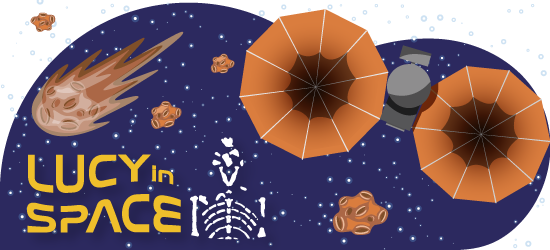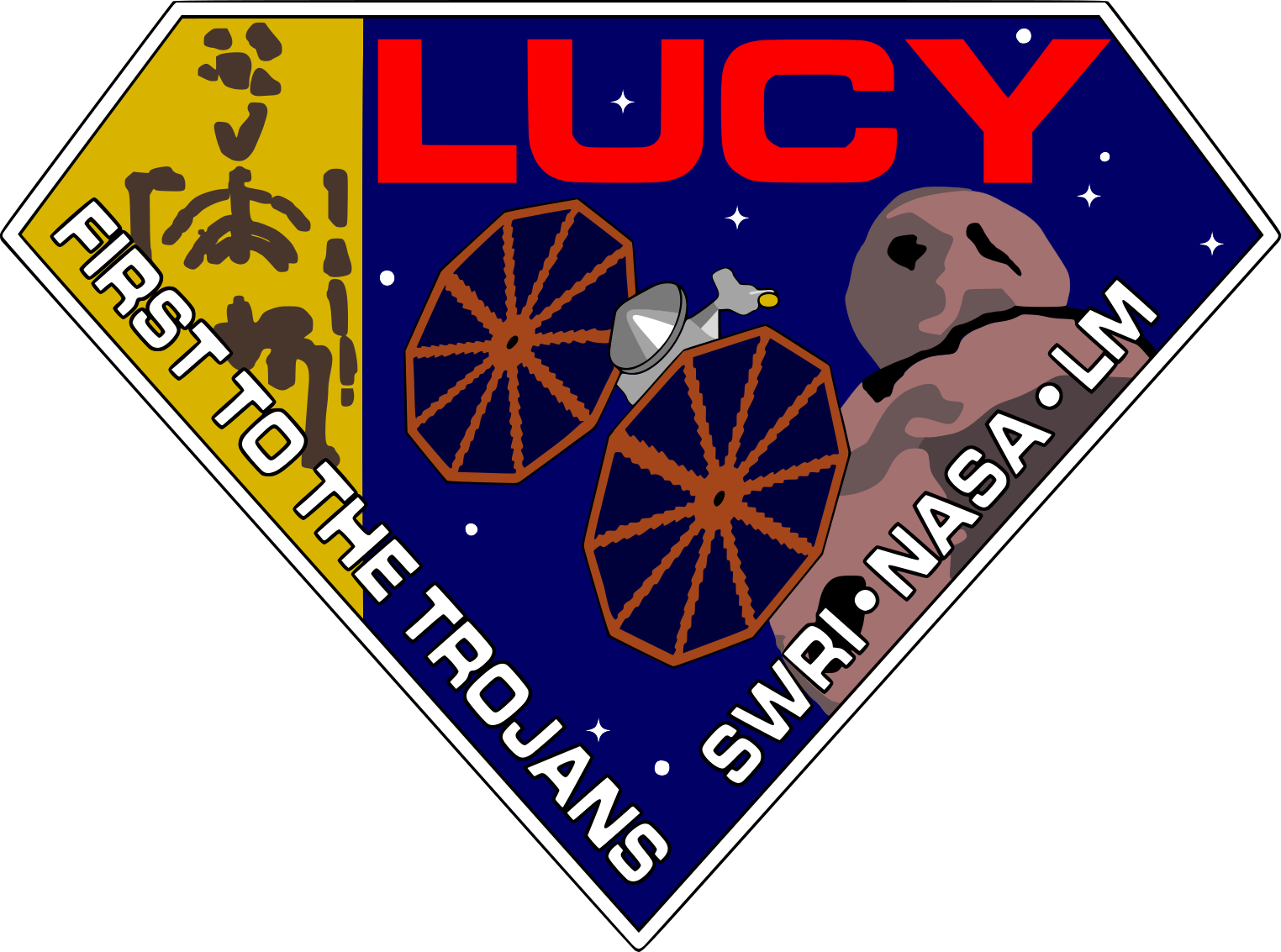
THE LUCY MISSION
What's the connection between a 3.2 million year old fossil and a NASA mission to the Trojan asteroids? Learn about the Lucy Fossil and the NASA Lucy Mission and tell your own story of human exploration!
What the Lucy Mission is all about
The NASA Lucy Mission to the Jupiter Trojan asteroids was named by a Southwest Research Institute team led by Principal Investigator Hal Levison and Deputy Principal Investigator Cathy Olkin in honor of the 3.2-million-year-old human ancestor fossil “Lucy,” discovered by Donald Johanson, Founding Director of the Institute of Human Origins at Arizona State University.
The Lucy Mission will be the first space mission to explore a group of small asteroids known as the Trojan asteroids. These asteroid groups are outer Solar System asteroids that orbit the sun in the same path as Jupiter—some asteroids are in front of the planet as it orbits, and some asteroids trail the planet as it makes its way around the sun.

The gas giant is massive enough that normally it scatters away all asteroids in its vicinity, but, due to the combined gravitational influences of the Sun and Jupiter, these Trojan asteroids have been trapped on stable orbits for billions of years. These asteroids provide a unique, never-before-explored sample of the remnants of our early Solar System.
So—just as the Lucy fossil provided unique insights into humanity’s evolution, the Lucy Mission promises to revolutionize our knowledge of planetary origins and the formation of the Solar System.
Join the mission!
- The Lucy Mission launched October 16, 2021—and has made at least one loop around the Earth as a "gravity assist" to get momentum for its trip to Jupiter!
- Read more about the fossil skeleton Lucy here
- Read more about the Lucy Mission here.
- Read about how ASU scientists are designing instruments for the spacecraft here.
Lucy Mission Student Competition
Our Lucy Mission student contest has closed, but you can see some of the wonderful poems, stories, and drawings submitted by reviewing the winning student contributions linked below.
Be Part of
Ask An Anthropologist
By volunteering, or simply sending us feedback on the site. Scientists, teachers, writers, illustrators, and translators are all important to the program. If you are interested in helping with the website we have a volunteers page to get the process started.



